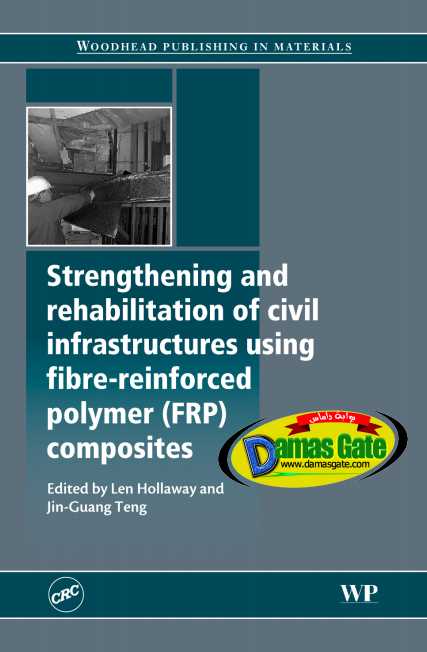Strengthening and Rehabilitation of Civil Infrastructures Using Fibre-Reinforced Polymer (FRP) Composites

Preface
Over the last two decades there has been a growing awareness amongst civil/structural engineers of the importance of the unique mechanical and in-service properties of advanced fi bre reinforced polymer (FRP) composites.
They have emerged as an attractive competitor to the more conventional
civil engineering materials for the creation of new structures and the strengthening/rehabilitation of existing ones. For new structures the material
is used for reinforcing and/or prestressing concrete structures as well as
constructing all FRP or hybrid FRP structures such as FRP bridge decks and
concrete-filled FRP tubular columns and piles. Currently, one of the main
uses of FRP composites is the strengthening/rehabilitation of structures
which were erected post Second World War. From the mid-1980s and continuing
to the present time a vast number of concrete, metallic and masonry
structures were/are in urgent need of repair/strengthening/
rehabilitation, due to either a change in use or structural degradation. Furthermore,
many concrete, metallic, timber and masonry structures were built
prior to the introduction of modern design codes, and hence do not meet
modern design requirements.
The extraordinary properties of FRP composites of lightweight, high strength-to-weight ratio, corrosion resistance, potentially high overall durability,
tailorability and high specific attributes enable them to be used in areas
where the conventional construction materials might be restricted.
Over the past three decades, the fabrication technologies for the production
of FRP composites have been revolutionised by sophisticated manufacturing
techniques. These technologies have enabled FRP composites to be
produced to high quality with minimal voids and accurate fi bre alignment.
In addition, a number of design guidance documents have been produced
and, with rational design methods, a safe and economic utilisation of this
relatively new technology can be assured.
Download
http://s18.alxa.net/s18/srvs2/02/002...structures.rar